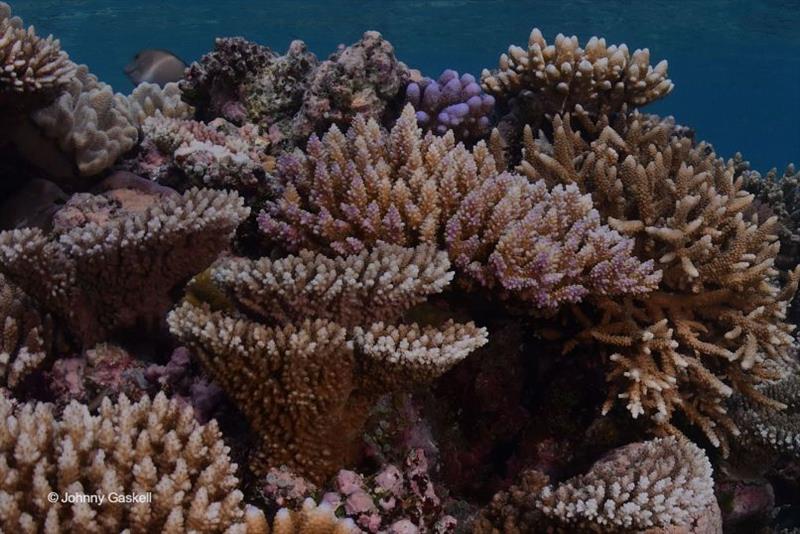
Great Barrier Reef health update - August 2020
by GBRMPA 10 Sep 2020 10:24 UTC

Reef health update - August 2020 © GBRMPA
As Australia's lead management agency for the Reef, we monitor Reef conditions very closely.
Over summer 2019-20 we issued weekly public reports about conditions on the Reef - the full series of information and video updates are below. These updates are based on forecasts, water temperature heat mapping, in-water surveys, citizen science and aerial surveys.
In addition to our regular updates, we've released the first Reef snapshot: summer 2019-20. We also released statements about the mass coral bleaching that occurred on the Reef and a statement on aerial surveys, along with educational information on coral bleaching.
With summer over, we are now releasing monthly updates until the beginning of summer 2020-21 when we'll resume weekly updates.
The Authority acknowledges the extreme impact that COVID-19 is having on tourism businesses and their communities and we are doing everything we can to support the industry in these difficult times. When it is safe to do so, we will encourage people from across Australia and around the world to see the Reef, love the Reef, and importantly protect the Reef.
Reef health update August 2020
Temperature and rainfall
In the last two weeks of August, sea surface temperatures throughout the Marine Park were 0.5 to 1.5 degreesC above the long-term monthly average.
Winter 2020 was warmer than average for Queensland, being the seventh warmest on record. Rainfall was above average in Queensland's west and north.
The Bureau of Meteorology moved from a La Niña WATCH to La Niña ALERT. This means there is a 70 per cent chance of a La Niña developing in 2020, including the possibility that it may develop in spring. For the Great Barrier Reef region, La Niña conditions typically result in early wet season onset, more tropical cyclones and an increased chance of widespread flooding.
Spring 2020 is forecast to be warmer and wetter than average across the region.
Reef health
The Eye on the Reef network reported isolated instances of low severity coral bleaching, disease and damage in the Cairns/Cooktown, Townsville/Whitsunday and Mackay/Capricorn management areas. No information is available from the Far Northern management area.
The Australian Institute of Marine Science (AIMS) Long-term Monitoring Program (LTMP) released their 2019/2020 annual summary for the Great Barrier Reef.
Crown-of-thorns starfish
Outbreaks of the coral-eating crown-of-thorns starfish (COTS) continue to impact reef health across all management regions, with the most severe impacts occurring on reefs in the outer Townsville/Whitsundays and inner and outer Mackay/Capricorn management regions.
In the Cairns/Cooktown region, the COTS control program has successfully culled COTS down to ecologically sustainable levels at five of the six reefs targeted by the program.
In the Townsville/Whitsundays region, culling is ongoing at two reefs.
In the Mackay/Capricorn region, culling activities are currently focusing on the Capricorn Bunker Group.